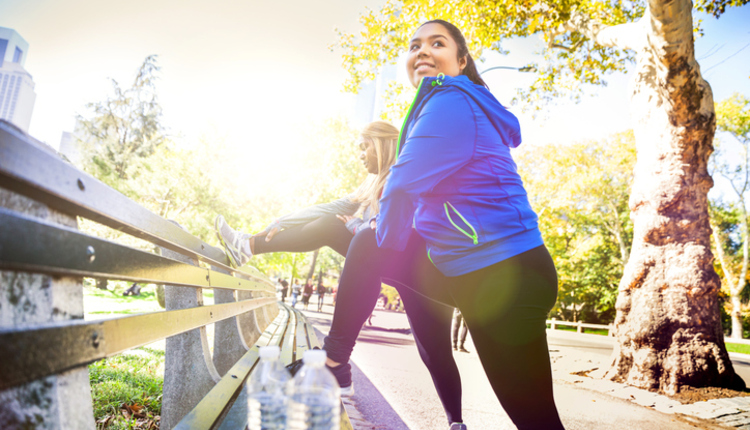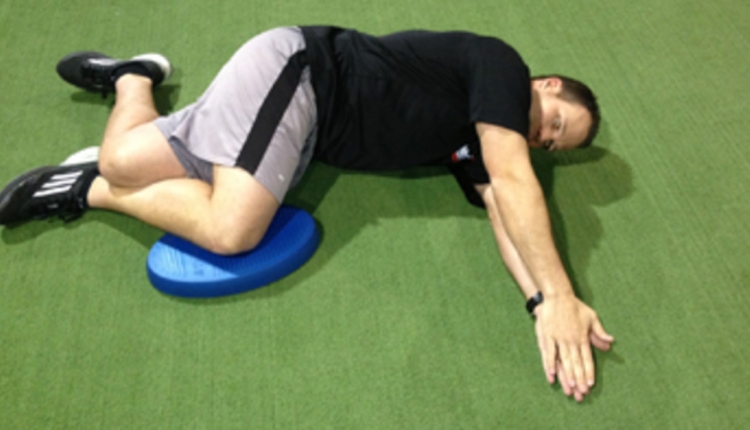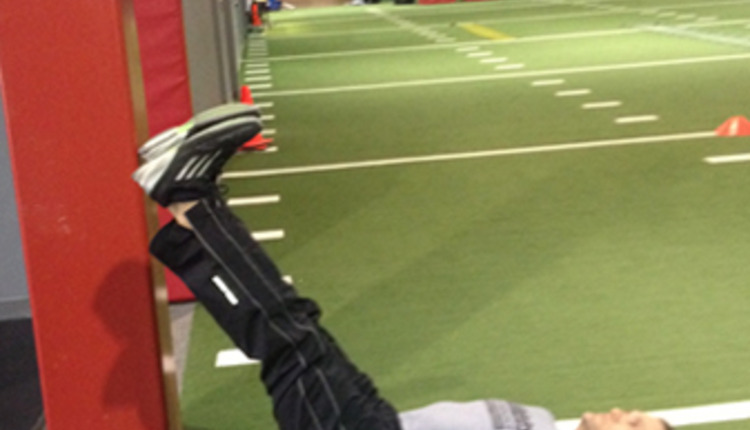BY Brian Schiff
Nov. 15 2014
Many of my athletes and clients exhibit poor hip mobility related to sitting and repetitive activity. Limited hip flexor and hamstring mobility both contribute to poor hip disassociation. One method I... View More
BY Brian Schiff
Nov. 1 2014
Shoulder pain and scapular dysfunction go hand in hand. I work with a lot of overhead athletes and pitchers. Keep in mind that throwers are expected to have some asymmetries. This exercise is an example... View More
BY Brian Schiff
Oct. 15 2014
Lateral quickness is an important part of athletic development. Having the ability to effectively decelerate and then re-accelerate the other way is critical for success in field and court sports. Incorporating... View More
BY Brian Schiff
Oct. 1 2014
Poor landing form and inadequate hip stability is a concern for many of the athletes I work with. One of the first things I like to assess is their ability to land and absorb force. You can learn a lot... View More
BY Brian Schiff
Sept. 15 2014
Core strength and stability deficits are apparent in many people. The ability to restrain movement while keeping a stable base or pillar is essential for injury prevention. Building prerequisite pillar... View More
BY Brian Schiff
Sept. 1 2014
Hip flexor tightness is a common finding in my assessments of clients. Restricted flexibility in the iliopsoas and rectus femoris restrict hip extension and create undue stress on the lumbar spine, as... View More
BY Brian Schiff
Aug. 15 2014
Increasing hip strength and stability is a common focus in training and injury prevention programs. Current research indicates hip and knee strengthening is more effective than knee strengthening alone... View More
BY Brian Schiff
Aug. 1 2014
Using a stability ball for hamstring exercises is commonplace in fitness and rehab settings. I feel the use of isometric exercise is often under rated and under utilized because it is viewed as boring... View More
BY Brian Schiff
July 15 2014
It is common to see scapular and rotator cuff dysfunction in clients. Repetitive overhead motion and certain lifts and exercises can expose the shoulder to increased strain, and muscle imbalances may further... View More
BY Brian Schiff
July 1 2014
Many people display limited thoracic spine rotation. Often, they have asymmetries based on their chosen sport or recreational activity. For rotational activities such as throwing, swimming, tennis, volleyball,... View More
BY Brian Schiff
June 15 2014
In the prior two columns, I addressed gluteal activation and overcoming TFL dominance to maximize mechanics. This exercise adds a single-leg component with external load to train the hips, core and lower... View More
BY Brian Schiff
June 1 2014
In my last column, I talked about foam rolling the TFL and how it can be synergistically dominant over the gluteus medius. This exercise addresses how to activate the gluteal muscles prior to engaging... View More
BY Brian Schiff
May 1 2014
Overhead athletes of all ages and abilities struggle with postural stability and kinetic chain energy leaks. Unfortunately, asymmetrical loading often creates unavoidable imbalances and movement compensations.... View More
April 29 2014
You. You are fat. Your clients are fat, and as a matter of fact so is your mother. The real question is why are we so offended by the mere mention of the word fat? Like it or not, fat is the third most... View More
BY Brian Schiff
April 15 2014
Many athletes and clients struggle with hamstring muscle activation. A normal quad to hamstring ratio would be 3:2, but studies often find that subjects tend to be closer to 2:1 (especially females). This... View More
BY Brian Schiff
April 1 2014
Training the core in multiple positions is advantageous for many reasons. I like to work in half-kneeling using various modes of resistance to improve pillar strength. This exercise covers a half-kneeling... View More
BY Brian Schiff
March 15 2014
This exercise involves a variation using an isometric RDL and upper body rowing motion. Single-leg stability and trunk control is an integral part of optimal sport performance and running. More importantly,... View More
BY Brian Schiff
March 1 2014
I utilize the single leg Romanian deadlifts (RDL) in my dynamic movement prep routines, lower extremity rehab and as part of performance training. It can be effectively used to increase mobility, stability,... View More
BY Brian Schiff
Feb. 15 2014
The shoulder mobility screen in the FMS often reveals side-to-side asymmetries. It is more common to see hypermobility in female clientele, while their male counterparts exhibit more hypomobility. Overhead... View More
BY Brian Schiff
Feb. 1 2014
The active straight leg raise (ASLR) assessment (as part of the FMS) is an essential part of any assessment I do on my athletes and runners. It provides a great look at a client's ability to stabilize... View More





















